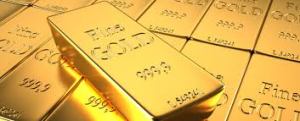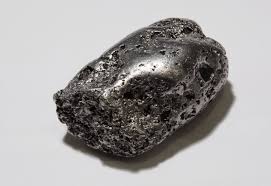Saffron – $11/gram

Saffron has an aroma and flavor which cannot be duplicated, and a chemical make-up which, when understood, helps the chef or home cook to know how to best release that flavor and aroma in cooking and baking. Saffron is sold in two forms, powder and threads, and each behaves very differently in the kitchen.
Gold – $56/gram

Pure gold is soft and is usually alloyed with other metals, such as silver, copper, platinum or palladium, to increase its strength. Gold alloys are used to make jewelry, decorative items, dental fillings and coins.
Gold is a good conductor of heat and electricity, and does not tarnish when it is exposed to the air, so it can be used to make electrical connectors and printed circuit boards.
Gold is also a good reflector of infrared radiation and can be used to help shield spacecraft and skyscrapers from the sun’s heat. Gold coated mirrors can be used to make telescopes that are sensitive to infrared light.
Rhodium- $58/gram

William Hyde Wollaston (who also discovered palladium, which doesn’t appear on this list of most expensive substances), an English chemist, discovered rhodium in crude platinum ore.
Though the name comes from the Greek word for “red”, there’s nothing red about it. It is a strong, hard metal, and is often used to improve the hardness and conductivity of other metals.
Platinum – $60/gram

Platinum is indeed a special substance, with value in industry, ornament and environmental improvement. More than 20% of all consumer goods either contain platinum or are produced using platinum; it’s in jewelry and catalytic converters, electronics and anti-cancer drugs… and eight tons of ore produce just an ounce of it.
Methamphetamine – $100/gram

You don’t have to have seen Breaking Bad to know that crystal meth is bad news. This synthetic stimulant is powerful and highly addictive, with numerous negative effects on a person’s health during use, during addiction and upon withdrawal.
This article provides more detail on all of these aspects of meth — its chemical makeup, its effects, its (myriad) drawbacks.
Rhino Horn – $110/gram

Meth is expensive and dangerous, but it at least does something; rhino horn is even more expensive, but sadly does nothing (as far as evidence- medicine is concerned, anyway, which wants its cures to actually be shown to work before being prescribed).
Demand for powdered rhino horn has spiked in Vietnam, which is bad news for those hoping for a fix and worse news for rhinos. This article further details the enormous inflation of demand for rhino horn, and its effects on rhino populations.
Heroin — $130/gram

Heroin is processed from morphine, which in turn comes from the poppy plant. Heroin usually appears as a white or brown powder. Street names for heroin include “smack,” “H,” “skag,” and “junk.”
Heroin is a highly addictive drug, and its use is a serious problem. It is both the most abused and the most rapidly acting of the opiates. It is typically sold as a white or brownish powder or as the black sticky substance known on the streets as “black tar heroin.”
Cocaine – $215/gram

Cocaine is a bitter, addictive pain blocker that is extracted from the leaves of Erythroxylon coca, also known as the coca scrub, a plant that comes from the Andean highlands in South America.
Cocaine is the most powerful stimulant of natural origin. The name of “cocaine” came from the plant “coca.” When Coca-Cola first came out it contained nine milligrams of cocaine per glass – in 1903 it was removed, but the drink still has coca flavoring.
Lysergic Acid Diethylamide (LSD) $3,000/gram

Lysergic acid diethylamide, abbreviated LSD or LSD-25, is the most expensive drug on the list. A very strong, mood-altering hallucinogen, its price per gram is only mitigated (for users) by its incredibly small dosage (measured in millionths of grams).
Its effects are unpredictable, and depend on everything from the person’s expectations to their surroundings to how they react to the experience itself.
Plutonium – $4,000/gram

Plutonium is a radioactive element most famous for its role in generating nuclear power through nuclear fission — both in peacetime (via nuclear reactors) and in war (via atomic bombs). It is poisonous, flammable, and radioactive, but occurs only in trace quantities in nature.
Painite – $9,000/gram

Painite, which is named after its 1950s discoverer, Arthur C.D. Pain, is so rare that most people do not know what it is. Until recently, only a very small number of stones were considered large and clear enough to be worth cutting into gemstones. More recently, additional sources have been found, but it is still incredibly rare.
Taaffeite Stone – Up to $20,000/Gram

The taaffeite gemstone (pronounced TAR-fight) is purple to red and was first discovered in 1945. Count Edward Taaffe bought a set of spinels and noticed something odd about one of them: the gemstone displayed double refraction, while a spinel does not. Taaffeite was thus the only gemstone that was first identified through a faceted gemstone.
Taaffeite is made up of magnesium, beryllium and aluminum. It is the first known gemstone that has beryllium and magnesium as major parts. Currently the only way it is used is as a gemstone.
Tritium – $30,000/gram

Tritium is a radioactive form of hydrogen, made naturally by cosmic rays, and synthetically in nuclear reactions (including nuclear weapons tests). In research, it’s used in fusion reactors and neutron generators. Tritium also has everyday uses: by mixing tritium with a chemical that emits light in the presence of radiation, a continuous light source is made without the need for batteries. Rifle sights and exit signs are two examples of this.
The radioactive decay product of tritium is a low energy beta that cannot penetrate the outer dead layer of human skin. Therefore, the main hazard associated with tritium is internal exposure from inhalation or ingestion.
Diamonds – $55,000/gram

In mineralogy, diamond is a metastable allotrope of carbon, where the carbon atoms are arranged in a variation of the face-centered cubic crystal structure called a diamond lattice.
Diamond is less stable than graphite, but the conversion rate from diamond to graphite is negligible at ambient conditions. Diamond is renowned as a material with superlative physical qualities, most of which originate from the strong covalent bonding between its atoms. In particular, diamond has the highest hardness and thermal conductivity of any bulk material. Those properties determine the major industrial application of diamond in cutting and polishing tools
and the scientific applications in diamond knives and diamond anvil cells.
As valuable and special as diamonds are scientifically and artistically, mining and processing of diamonds have a long history of brutal inequality and exploitation.
Californium 252 – $27 Million/gram

Californium-252 is a rare radioactive isotope used commercially as a reliable, cost-effective neutron source for prompt gamma neutron activation analysis (PGNAA) of coal, cement and minerals, and for detection and identification of explosives, land mines and unexploded military ordnance. Other uses include neutron radiography, reactor start-up sources, cancer treatment, and calibration standards.
Antimatter – $6.25 Trillion/gram

Antimatter is composed of antiparticles, which have the same mass as particles of ordinary matter, but have opposite charge and other particle properties. When particles and antiparticles meet, there is a larger release of energy, in the form of high-energy photons (gamma rays), neutrinos, and lower-mass particle–antiparticle pairs.
The reason antimatter is so expensive is that it’s very, very hard to make, and does not last long in our regular-particle-filled world: antimatter is currently made in batches that are measured by the number of atoms, and lasts only minutes. This video from the Science Channel website gives one specific hypothetical use of antimatter: long-distance space travel.
